Wilson Tang Lecture: Geotechnical probability: From FOSM to RFEM
Biography

D. Vaughan Griffiths PhD, DSc, PE, D.GE, C.Eng, FICE, Dist.M.ASCE is a Professor of Civil Engineering at the Colorado School of Mines. His research interests lie in application of finite element and risk assessment methodologies in geotechnical engineering, and his papers on slope stability analysis are among the most highly cited in the geotechnical engineering literature. He is the co-author of three textbooks that have gone into multiple and foreign language editions on “Programming the Finite Element Method”, “Risk Assessment in Geotechnical Engineering” and “Numerical Methods for Engineers”. He gives regular short-courses on Risk Assessment for practitioners, with recent offerings in Australia, Canada, China, Colombia, New Zealand, Norway, Taiwan and the USA. Professor Griffiths is a past-editor of the journals Computers and Geotechnics, Journal of Geotechnical and Geoenvironmental Engineering and Géotechnique. In 2017, he was named the Cross-Canada Lecturer by the Canadian Geotechnical Society, and the same year received the H. Bolton Seed Medal from the ASCE/Geo-Institute. He served on the Board of Direction of ASCE from 2010-2013 as the Region 7 Director, and was inducted as a Distinguished Member of the ASCE in 2020. In 2021 he was the TH Wu Distinguished Lecturer.
Abstract
For geotechnical professionals, the words “risk” and “probability” should not be confused, since risk is the probability of design failure weighted by its consequences. An obvious implication of this definition is that if the consequences of a failure are serious in terms of loss of life and/or cost to infrastructure, the allowable or target probability of failure for design must be commensurately low. Conversely, if the consequences of failure are relatively less important, a higher allowable or target probability for design can be allowed. Risk is therefore inextricably linked to quantitative probability estimates. Geotechnical engineers have a toolbox of methods available for estimating probability, ranging from hand calculation methods such as the First Order Second Moment (FOSM) method, to mildly computational method such as the First Order Reliability Method (FORM) to intensively computational numerical methods such as the Random Finite Element Method (RFEM). This paper reviews these methods, offers an alternative approach to FORM, and highlights some of their characteristics that can be taken into account when applying them to probabilistic geotechnical applications.
Suzanne Lacasse Lecture: It Is All About Decisions
Biography

ROBERT B. GILBERT P.E., Ph.D., D.GE, NAE is Chair of the Department of Civil, Architectural and Environmental Engineering at The University of Texas at Austin. He joined the faculty in 1993 after practicing as a geotechnical engineer for five years with Golder Associates Inc. His technical focus is the assessment, evaluation and management of risk for civil engineering systems. Dr. Gilbert has been awarded the Norman and Croes Medals from the American Society of Civil Engineers and an Outstanding Civilian Service Medal from the United States Army Corps of Engineers. He was elected to the National Academy of Engineering in 2020.
Abstract
The purpose of assessing risk is to help make decisions. This paper will describe geotechnical case histories to demonstrate how risk assessment can be used to inform decisions. The cases will include a project-specific decision, a design-code decision and a public-policy decision. The paper will conclude with lessons learned from risk-based decision making in practice and opportunities to improve its value in the future with big data, machine learning and climate change.
Keynote: Applications of Artificial Intelligence in Geotechnical Engineering
Biography

Mark Jaksa is Professor of Geotechnical Engineering in the School of Civil, Environmental and Mining Engineering at the University of Adelaide, Australia. He has been an academic for more than 30 years, before which, he spent 4 years practising as a consulting geotechnical and civil engineer in Adelaide and Canberra in Australia. He has a Bachelor of Engineering (Honours) degree in Civil Engineering and a PhD, both from the University of Adelaide. He has published more than 200 papers, chapters and reports on various aspects of geotechnical engineering research and teaching. His primary areas of expertise are in the characterisation of the spatial variability of soils, probabilistic analyses, artificial intelligence, ground improvement, unsaturated soils and enhancing learning in geotechnical engineering. He has received several awards recognising his contributions to learning and teaching in geotechnical engineering. Mark is a former Vice-President for Australasia and Treasurer of the International Society for Soil Mechanics and Geotechnical Engineering and Chair of the Australian Geomechanics Society. He is also a past Chair of the ISSMGE’s Technical Committee, TC306, on Geo-engineering Education and a member of TC304, on Risk Assessment and Management.
Abstract
Since artificial intelligence was first applied to geotechnical engineering in the mid-1990s, in the form of artificial neural networks (ANNs), it has shown great promise in providing superior estimates of a wide range of geotechnical behaviours and applications, when compared against traditional techniques. This paper examines two artificial intelligence techniques, namely ANNs and genetic programming (GP), that have been applied successfully by the author and his co-workers to the settlement of shallow and pile foundations, and predicting the performance of rolling dynamic compaction. The paper also examines the benefits and limitations of ANNs and GP in the context of geotechnical engineering, and the process for determining optimal models.
Keynote: Global, regional, or municipal database? Which is better?
Biography
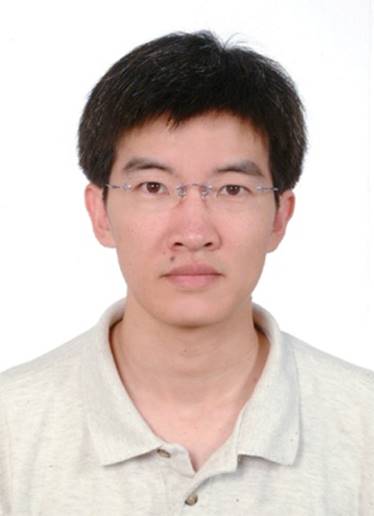
Dr. Ching is Distinguished Professor in the Dept. of Civil Engineering at National Taiwan University. He obtained his PhD degree in 2002 in University of California at Berkeley. His main research interests are geotechnical risk & reliability, random fields & spatial variability, probabilistic site characterization & geotechnical data analytics. He is Chair of TC304 (risk) in ISSMGE and Chair of Geotechnical Safety Network (GEOSNet). He is Managing Editor of Georisk, Associate Editor of Canadian Geotechnical Journal, and Editorial Board Member of Structural Safety. Dr. Ching is the recipient of the Outstanding Research Award (2011, 2014) and the Wu-Da-Yu Award (2009) from the Ministry of Science and Technology of Taiwan. He is now the Convener of Civil & Hydraulic Engineering Program of the Ministry of Science and Technology of Taiwan.
Abstract
It is well known that a transformation model constructed based on global data usually has large transformation uncertainty. In principle, a site-specific transformation model is desirable, but such a model may have large statistical uncertainty if site-specific data are sparse. Our recent works have shown that it is possible to construct a quasi-site-specific transformation model with relatively small uncertainty by incorporating the prior cross-correlation information in the database, if a suitable probabilistic model (such as the hierarchical Bayesian model recently developed by Ching et al. 2021) is adopted to capture the prior cross-correlation behaviors in the database. There is a question of what kind of database (global, regional, or municipal) can reduce the uncertainty in a more effective way. The purpose of this presentation is to address this question. To investigate this, a global clay database, a regional (Scandinavia) clay database, and a municipal (Shanghai) clay database are adopted to assist the construction of the quasi-site-specific transformation models for a Finland site and a Shanghai site. The uncertainties of the resulting quasi-site-specific transformation models will be compared. The database that results in a smaller uncertainty can be considered as a better database. Some insights may be obtained from the analysis results, and some discussions will be given
Keynote: Recent advances on uncertainties and solutions for a reliable and effective prediction of rockfall hazard and risk
Biography

Anna Giacomini is Professor in Civil Engineering at the University of Newcastle and the Director of the Priority Research Centre for Geotechnical Science and Engineering in the College of Engineering, Science and Environment of the University of Newcastle. Anna received her PhD in Civil Engineering in 2003 from the University of Parma (Italy) and she has been working in the field of rock mechanics and rockfall analyses for more than 20 years. Adapting to the new Australian Environment, she has extended her extensive research experience in rockfall analysis and rock mechanics from civil engineering to mining. Since 2009, she has been leading several major research projects through industry and government funds on rockfall hazard and mitigation developing new designs for engineered barriers to protect valuable major corridors, infrastructures, and recreational areas from rockfall hazards. Anna’s contribution to science in rock mechanics and rockfall analysis has been recognised by several awards such as the 2019 John Booker Medal from the Australian Academy of Science and the 2019 Best Practice Industry Engagement Award she received from the Newcastle Institute for Energy and Resources. Anna has published over 150 scientific works, she serves as Editorial board member of four prestigious International Journals in the field, as reviewer for several national and international funding bodies and many international journals in the rock mechanics and engineering fields.
Abstract
An effective management of rockfall risk is paramount in both civil and mining engineering. Rockfall represents one of the major natural hazards, threatening human life along pivotal national transportation networks, recreation coastal areas and popular scenic walking paths, and personnel and machineries in mining environments. Empirical methods and probabilistic rockfall simulations are generally applied to predict the associated risks accounting for some of the several uncertainties associated with rockfall scenarios. The lecture will present recent developments on the investigation of the effect of rock slope features and impact conditions variability on a reliable estimation of rockfall energies and run out distances at the base of sub-vertical rock faces. Extensive and unique laboratory and field data of rockfall events collected over recent years and probabilistic simulations are used to derive empirical correlations for a rapid estimation of the expected motion parameters, such as fragmentation at impact, impact energies and run out conditions, to be considered for an effective mitigation of rockfall risks. Recent results obtained on the application of data driven models for 2D rockfall trajectory prediction and hazard assessment will also be presented and provide new insights into the risks associated with the uncertainties of current rockfall simulations
Keynote: Bridging the Gap Between Research and Practice
Biography

Stephen Buttling graduated from Imperial College in 1970, and immediately started research at the University of Bristol leading to the award of a PhD in January 1975. He worked in the UK for a major ground engineering contractor, and then for a small consultancy, before moving to Hong Kong to work on the Island Line of the MRTC in 1982. From there he moved to Singapore to continue work on underground railways and mass transit systems, before returning to Hong Kong in 1987. In 1990 he moved to Thailand where he worked for 16 years on major infrastructure projects, including elevated highways, bridges, hydroelectric power plants, port and harbours and the new International Airport. In 2006 he moved to Brisbane where he lived for 14 years, again working on major bridges and port works, as well as open pit mining from which he derived his initial interest in probabilistic methods, and tailings storage facilities. In late 2020 he moved back to Thailand where he still lives, but remains active in geotechnical engineering in Queensland., trying to implement probabilistic methods into the design of slopes and consolidation of soft ground in particular, and to spread the word amongst more junior geotechnical engineers.
Abstract
The gap between research in geotechnical safety and risk, and practice, is not just a gap, it is a yawning chasm. This keynote lecture will present a personal view, based on 50 years in the geotechnical industry, and call on first hand and second hand evidence gathered over those years, to show how wide and deep this chasm is, and will call for open discussion on what can and must be done to bridge the chasm, and make the practice of geostatistics available to all, so that proper assessments of uncertainty, risk, and reliability can become a normal part of everyday geotechnical practice. This is necessary for many reasons, but first and foremost is the misconception that deterministic analysis brings, that we are dealing with known quantities.
Keynote: Reliability Assessment of Existing Geotechnical Structures
Biography
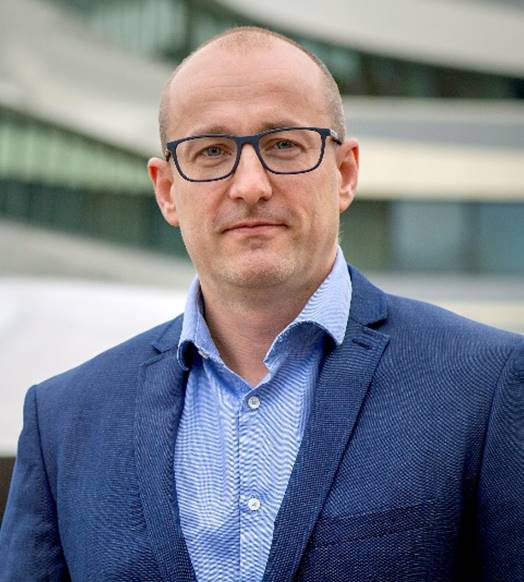
Dr. Timo Schweckendiek is a senior researcher/consultant in geotechnical risk and reliability at Deltares (NL) since 2006; he is also part-time affiliated to Delft University of Technology. His interest in geotechnical reliability was sparked working on his MSc thesis on ‘Reliability analysis of deep excavations’ and has not vanished ever since. Timo’s early work focused on reliability and risk analysis of flood defense systems, largely related to a major revision of the assessment and design approaches for dikes and hydraulic structures in the Netherlands. In that period, Timo also produced his PhD thesis on reliability and Bayesian updating for internal erosion (piping) of dikes. In recent years, his focus has shifted to broader application of reliability concepts to a wide range of geotechnical structures and problems such as retaining structures, piles or railway embankments. With his team at Deltares, he works on geotechnical reliability in projects, method and tool development, education and code development. Timo is affiliated to the Dutch Expertise Network for Flood Protection (ENW), the Dutch Association for Risk Analysis and Operational Safety (NVRB). ISSMGE-TC304, the subcommittee updating Eurocode 7 (CEN/TC250/SC7), and he is currently serving on the GEOSNet board.
Abstract
Reliability analysis for geotechnical structures has been subject to extensive research since the 1980s; the state-of-the-art is evolving with an increasing pace. The amount of academic production in this field suggests that scholars see significant potential in the application of reliability-based methods in geotechnical engineering practice. What about the state-of-practice? Do we also see an increasing amount of applications of uncertainty- and reliability-based approaches in geotechnical and civil engineering? In this keynote lecture, Dr. Schweckendiek will critically examine the state-of-practice of reliability approaches in geotechnical practice, largely drawing from his own experience in the Netherlands with flood defenses, hydraulic structures and railway embankments. He will discuss the benefits and limitations based on practical examples, specifically focusing on the assessment of existing structures. In many countries, a considerable share of the infrastructure assets approaches the end of their design life time. Hence, there is an increasing demand for underpinning that continued operation of these structures is safe or responsible, often under conditions deviating from the original design (e.g. loads or environmental factors). Schweckendiek will discuss the reasons why assessment of existing structures is particularly amenable to reliability analysis, such as the availability of performance information, cost-benefit considerations and the problems of assessing existing structures based on codes developed for design. For substantiating his propositions, he will draw from recent project experiences in the Netherlands with quay walls, flood defenses or wooden foundations piles. The goal of this lecture is to stimulate discussion on the future of our profession between academics, applied researchers and practitioners, aiming at realizing the full potential of reliability in geotechnical practice. Examining the lessons learnt and success factors, Schweckendiek will argue which developments and activities are needed for our research to be truly impactful for reliability assessment of geotechnical structures, such as the incorporation of data-driven approaches, data fusion or eventually the development of digital twins.
Keynote: Slope reliability analysis and risk assessment: a modern computational perspective
Biography
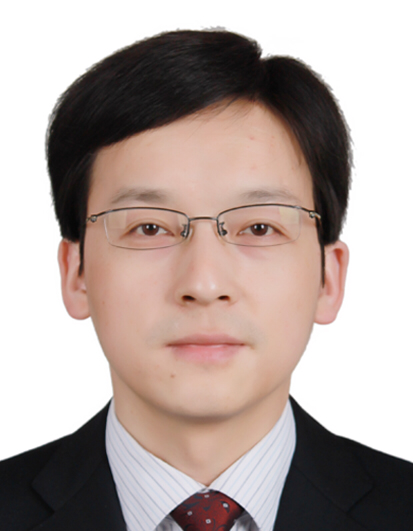
Dianqing Li is a Professor in the State Key Laboratory of Water Resources and Hydropower Engineering Science, Wuhan University. His main research interests include risk and reliability in geotechnical engineering, risk and uncertainty in dams, embankments, and slopes. He published more than 130 research papers in reputable SCI journals. He served as an executive board member of Geotechnical Safety Network (GEOSNet), a member of TC304 (risk) in the International Society for Soil Mechanics and Geotechnical Engineering (ISSMGE), and a member of ASCE Technical Committee on Risk Assessment and Management. He is currently editorial board members (EBM) of several international journals, including Computers and Geotechnics, Soils and Foundations, Georisk, and ASCE-ASME Journal of Risk and Uncertainty in Engineering System. He is the recipient of the GEOSNet Award in 2019, Sloan Outstanding Paper Award for 2019 (Computers and Geotechnics), First-class award for natural science, Hubei Provincial Government, 2017, First-class award for natural science, Ministry of Education, 2011 and 2020, National Science Fund for Distinguished Young Scholars, China, in 2012, and the Young and Middle-Aged Leading Scientists, Engineers and Innovators, Ministry of Science and Technology, China, in 2013.
Abstract
Slope failure is one of the most commonly-encountered geo-hazards. It is indispensable to properly evaluate slope failure probability and consequences for quantitative slope risk management and reduction. This task relies on the understanding of site conditions, slope stability modeling and analysis, uncertainty quantification and propagation, etc. Slope reliability analysis and risk assessment can be accomplished under a probabilistic framework in a rational and rigorous way. With the advance of computing technologies, slope reliability analysis and risk assessment allow for incorporating more geological and geotechnical details into the analysis, such as soil stratification uncertainty, inherent spatial variability, model uncertainty, multiple failure modes, etc. This study presents recent developments of computer-based simulation methods for slope reliability analysis and risk assessment, which take full advantage of modern computational technologies and powers. Major topics include efficient slope reliability analysis methods based on surrogate models and/or variance reduction techniques, slope system risk assessment method, and effects of various uncertainties on slope failure modes and risk. The roles of advanced computer-based simulation techniques in slope reliability analysis and risk assessment will be emphasized.
Bright Spark Lecture: Uncertainty quantification in data-driven geotechnical stratigraphic modeling
Biography
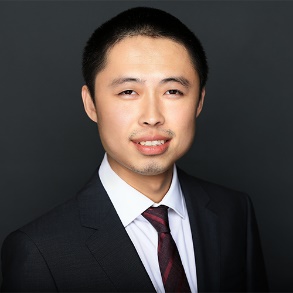
Dr. Hui (Jack) Wang joined the University of Dayton in 2018 as an assistant professor with the Department of Civil and Environmental Engineering. He obtained his BS and MS degrees in civil engineering from Tongji University and received his Ph.D. degree at the University of Akron in geotechnical engineering. Before his faculty appointment, Dr. Wang has three years of research experience in machine learning and computational geosciences at the RWTH Aachen University in Germany. His research focuses on the opportunities in the multidisciplinary fields spanning machine learning, geotechnical/geological subsurface modeling, smart infrastructure, and reliability & risk assessment. He is a member of ISSMGE TC304 (Engineering Practice of Risk Assessment and Management), and ASCE\Geo-Institute Technical committee: Risk Assessment and Management. He is a reviewer for all major international journals of geotechnical engineering, civil and infrastructure engineering, and engineering geology. He is also on the editorial board of the Journal of Pipeline Science and Engineering.
Abstract
Industry 4.0 will bring about a new Geotech digital era dominated by data science and sensing technologies. In alignment with this trend, data-driven geotechnics is an emerging research field that contributes to the digital transformation of geotechnical engineering. In order to practice precision design and construction toward better sustainability and resiliency, geotechnical reliability and risk analysis are sound only when the source uncertainty – the interpretation of observed data– is well quantified. Yet at present, it still heavily depends on engineers’ subjective experience and may result in a less- or over-conservative design/decision. The challenges are two-fold: 1) how to better interpret geotechnical data that are multivariate, sparse, incomplete, and potentially corrupted in an algorithmic and smart manner at probed points and 2) conditional on observed data, how to infer and model geotechnical information at vast unobserved locations accurately with quantified uncertainty. In this study, the above two challenges are addressed to a certain extent using a novel Bayesian approach for 2D soil stratigraphic interpretation. This new approach builds upon the author’s previously developed one-dimensional hidden Markov random field (HMRF) model and 2D anisotropic Markov random field (MRF) simulation algorithm. Bayesian machine learning is adopted to jointly perform parameter estimation and stochastic simulation of soil stratigraphic profiles. We have tested two different types of site investigation data: borehole logs and cone penetration testing soundings. The advantages of the developed approach can be summarized into three points: 1) inferring stratigraphic profile and associated uncertainty in an automatic and fully unsupervised manner; 2) relatively lower computational cost; 3) both aleatoric and epistemic uncertainties are taken into consideration. This paper contributes to the techniques leveraging valuable data assets for informed decision-making in geotechnical engineering risk management.
Bright Spark Lecture: Coupled Characterization of Stratigraphic and Geo-properties Uncertainties and Evaluation of the Influences on Geotechnical Performance
Biography

Dr. Wenping Gong is a Professor in the Faculty of Engineering, China University of Geosciences (Wuhan). He received his PhD from Clemson University (USA), and his research focuses primarily on engineering geology, geohazards, site characterization, tunnel engineering, risk and reliability, uncertainty modeling, and remote sensing. He has published more than 70 international journal papers. Dr. Gong is currently the Co-Editor-in-Chief of Engineering Geology. He also serves on the editorial boards of several international journals such as Bulletin of Engineering Geology and the Environment, and Marine Georesources & Geotechnology. In addition, he is a member of the ASCE/G-I technical committee on Risk Assessment and Management (RAM) and Technical Committee TC304 of ISSMGE.
Abstract
The main purpose of site characterization is to characterize the subsurface stratigraphic configuration and the associated geo-properties. Due to the inherent spatial variability of geological bodies and limited site investigation efforts, uncertainty is often unavoidable in the derived subsurface stratigraphic configuration and the associated geo-properties. In previous studies, substantial research work has been undertaken to address geo-properties uncertainty and evaluate its effects on the performance assessment and design of geotechnical systems; whereas, characterization of the stratigraphic uncertainty and analyses of its effect on the predicted performance of geotechnical systems have been relatively limited. As an outcome, the research on a coupled characterization of stratigraphic and geo-properties uncertainties has been hardly reported in the literature. To fill this technical gap, the authors have recently developed a conditional random field approach for the coupled characterization of stratigraphic and geo-properties uncertainties. In the context of the coupled characterization approach, the spatial correlation of the stratum existence between different subsurface elements and that of geo-properties are captured by two independent autocorrelation functions; as such, the coupling between the stratigraphic configuration and the spatial distribution of geo-properties can be realized through an update of the autocorrelation matrix and statistics of geo-properties in non-borehole elements, based on the sampled stratigraphic configuration. In this conference paper, the key components of this coupled characterization approach, including methodology and implementation procedure, are reviewed. Then, the effectiveness of this characterization approach is demonstrated through a series of examples, and the superiorities of this coupled characterization approach over the existing characterization approaches are discussed. Finally, two case studies are undertaken to investigate the influences of the stratigraphic and geo-properties uncertainties on the geotechnical performance evaluation.
Bright Spark Lecture: Risk management of cost overrun and delay in underground excavation
Biography
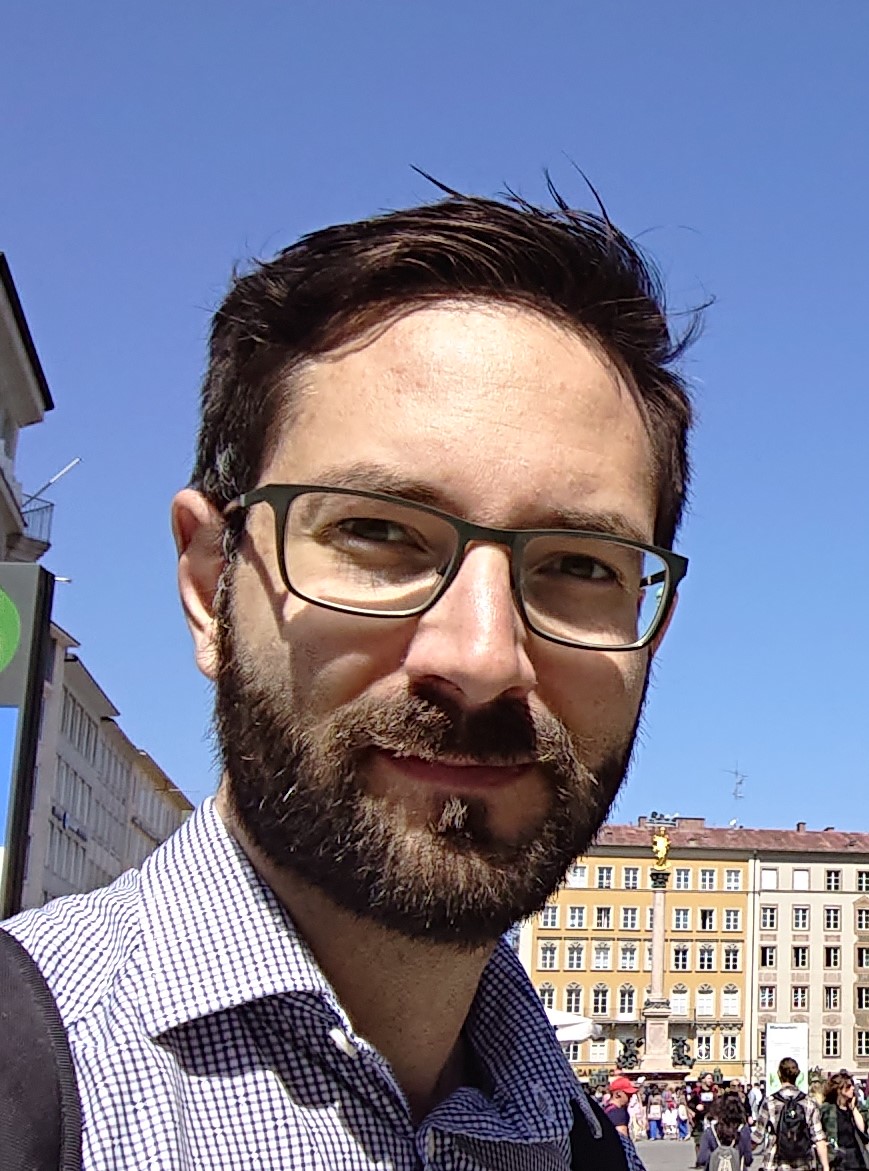
Johan Spross has a master degree in civil engineering (2011) and a PhD in soil and rock mechanics (2016), both from KTH Royal Institute of Technology in Stockholm, Sweden, where he also is currently employed as a researcher. In 2019, Johan visited the Engineering Risk Analysis group at the Technical University of Munich as a guest researcher. His current research concerns the use of probabilistic tools for design of geotechnical structures, often in combination with the observational method. Recently, however, Johan has broaden his research efforts toward management of economic and contractual risks in underground projects. In addition to doing research, Johan is teaching geotechnics on bachelor and master level, as well as supervising doctoral students. He is also very active in the revision work of Eurocode 7 both on national and European level.
Abstract
This bright spark lecture opens by noting that geological and geotechnical uncertainty affects not only a tunnel’s structural safety, but also its budget and time plan. Cost overruns and delays of underground projects are in fact a huge problem worldwide and neglecting the effect of geological uncertainty in the project planning can be an important reason for this. As a consequence, both clients and contractors need sensible risk management tools and contractual frameworks that facilitate fair risk sharing between the involved parties, as well as reduce the number of contractual disputes. The lecture will highlight a number of such tools, like probabilistic time and cost assessments and geotechnical baseline reports, and discuss their use from a risk management perspective.